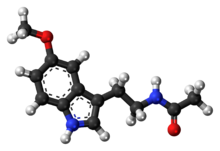Rhythmic control of endocannabinoids in the rat pineal gland.
Abstract
Endocannabinoids modulate neuroendocrine networks by directly targeting cannabinoid receptors. The time-hormone melatonin synchronizes these networks with external light condition and guarantees time-sensitive and ecologically well-adapted behaviors. Here, the endocannabinoid arachidonoyl ethanolamide (AEA) showed rhythmic changes in rat pineal glands with higher levels during the light-period and reduced amounts at the onset of darkness. Norepinephrine, the essential stimulus for nocturnal melatonin biosynthesis, acutely down-regulated AEA and other endocannabinoids in cultured pineal glands. These temporal dynamics suggest that AEA exerts time-dependent autocrine and/or paracrine functions within the pineal. Moreover, endocananbinoids may be released from the pineal into the CSF or blood stream.





